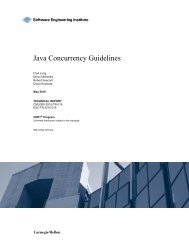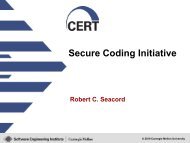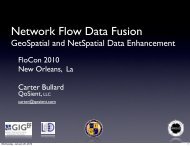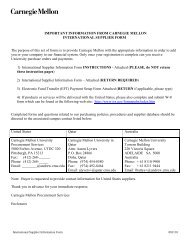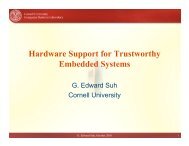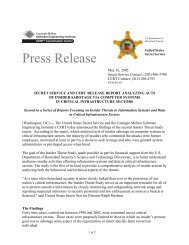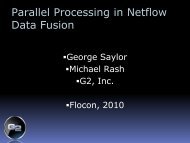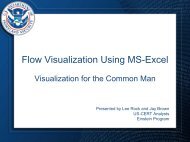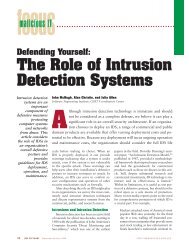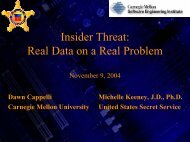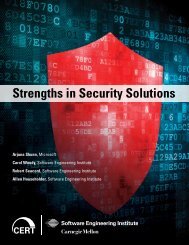CERT Resilience Management Model, Version 1.0
CERT Resilience Management Model, Version 1.0
CERT Resilience Management Model, Version 1.0
- No tags were found...
Create successful ePaper yourself
Turn your PDF publications into a flip-book with our unique Google optimized e-Paper software.
their ability to transform the way that organizations and industries work. Unfortunately, not allmaturity models contain the rigor of models like CMMI, nor do they accurately deploy many ofthe maturity model constructs used successfully by CMMI. It is important to have some basicknowledge about the construction of maturity models in order to understand what differentiates<strong>CERT</strong>-RMM and why the differences ultimately matter.In its simplest form, a maturity model is an organized way to convey a path of experience,wisdom, perfection, or acculturation. The subject of a maturity model can be an object or things,ways of doing something, characteristics of something, practices, or processes. For example, asimple maturity model could define a path of successively improved tools for doing math: usingfingers, using an abacus, using an adding machine, using a slide rule, using a computer, or using ahand-held calculator. Thus, using a hand-held calculator may be viewed as a more mature toolthan a slide rule.A capability maturity model (in the likeness of CMMI) is a much more complex instrument, withseveral distinguishing features. One of these features is that the maturity dimension in the modelis a characterization of the maturity of processes. Thus, what is conveyed in a capability maturitymodel is the degree to which processes are institutionalized and the organization demonstratesprocess maturity.As you will learn in Chapter 5, these concepts correlate to the description of the “levels” inCMMI. For example, at the “defined” level, the characteristics of a defined process (governed,staffed with trained personnel, measured, etc.) are applied to a software or systems engineeringprocess. Likewise for the “managed” level, where the characteristics of a managed process areapplied to software or systems engineering processes. Unfortunately, many so-called maturitymodels that claim to be based on CMMI attempt to use CMMI maturity level descriptions, yet donot have a process orientation.Another feature of CMMI—as implied by its name—is that there are really two maturitydimensions in the model. The capability dimension describes the degree to which a process hasbeen institutionalized. Institutionalized processes are more likely to be retained during times ofstress. They apply to an individual process area, such as incident management and control. On theother hand, the maturity dimension is described in maturity levels, which define levels oforganizational maturity that are achieved through raising the capability of a set of process areas ina manner prescribed by the model.From the start, the focus in developing <strong>CERT</strong>-RMM was to describe operational resiliencemanagement from a process perspective, which would allow for the application of processimprovement tools and techniques and provide a foundational platform for better and moresophisticated measurement methodologies and techniques. The ultimate goal in <strong>CERT</strong>-RMM is toensure that operational resilience processes produce intended results (such as improved ability tomanage incidents or an accurate asset inventory), and as the processes are improved, so are theresults and the benefits to the organization. Because <strong>CERT</strong>-RMM is a process model at its core, itwas perfectly suited for the application of CMMI’s capability dimension. Thus, <strong>CERT</strong>-RMM is acapability model—grounded in process and providing a path for improving capability. <strong>CERT</strong>-RMM, however, is not a capability maturity model, yet. Describing organizational maturity formanaging operational resilience by defining a prescriptive path through the model (i.e., byproviding an order by which process areas should be addressed) requires additional study and13 | CMU/SEI-2010-TR-012



